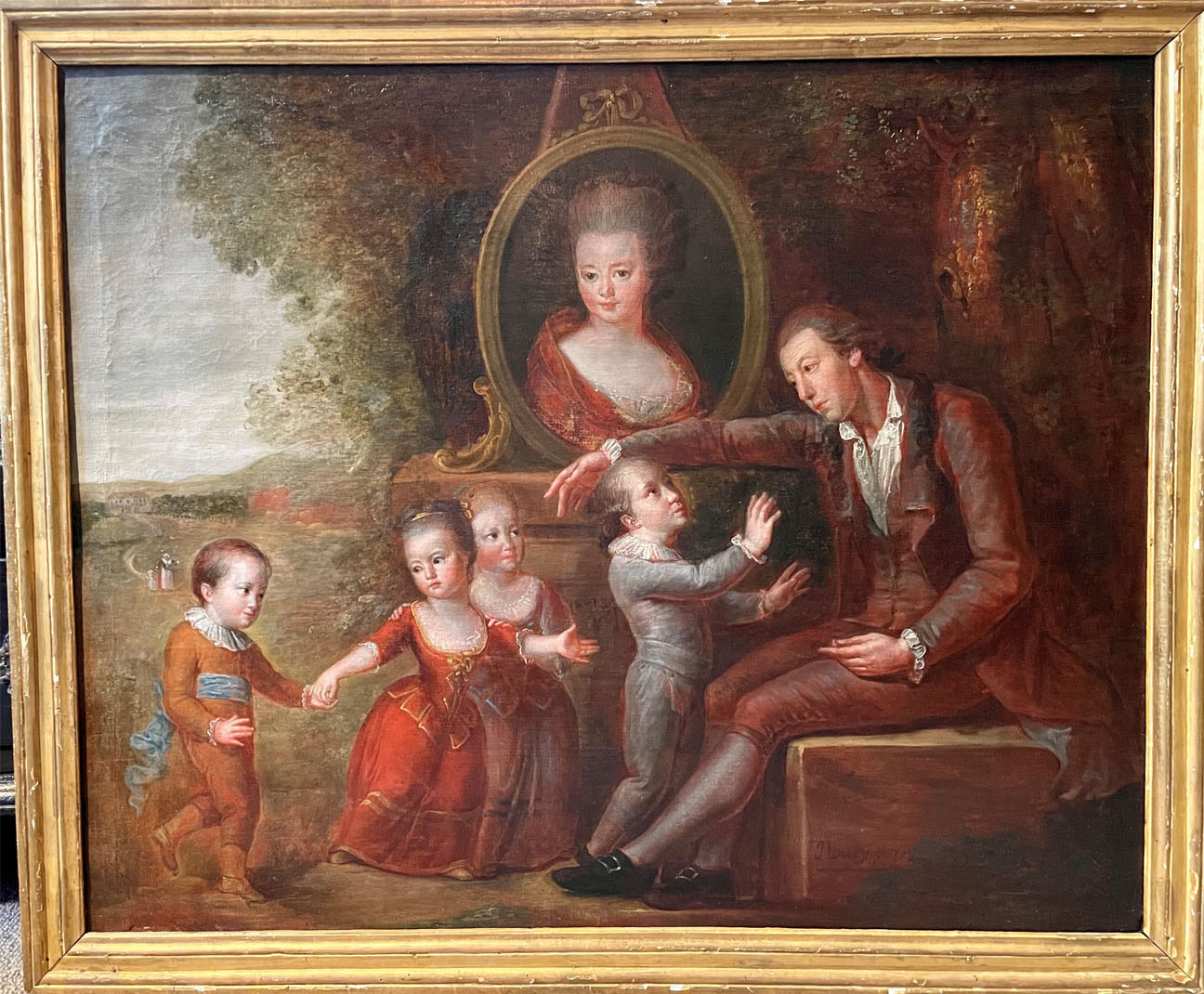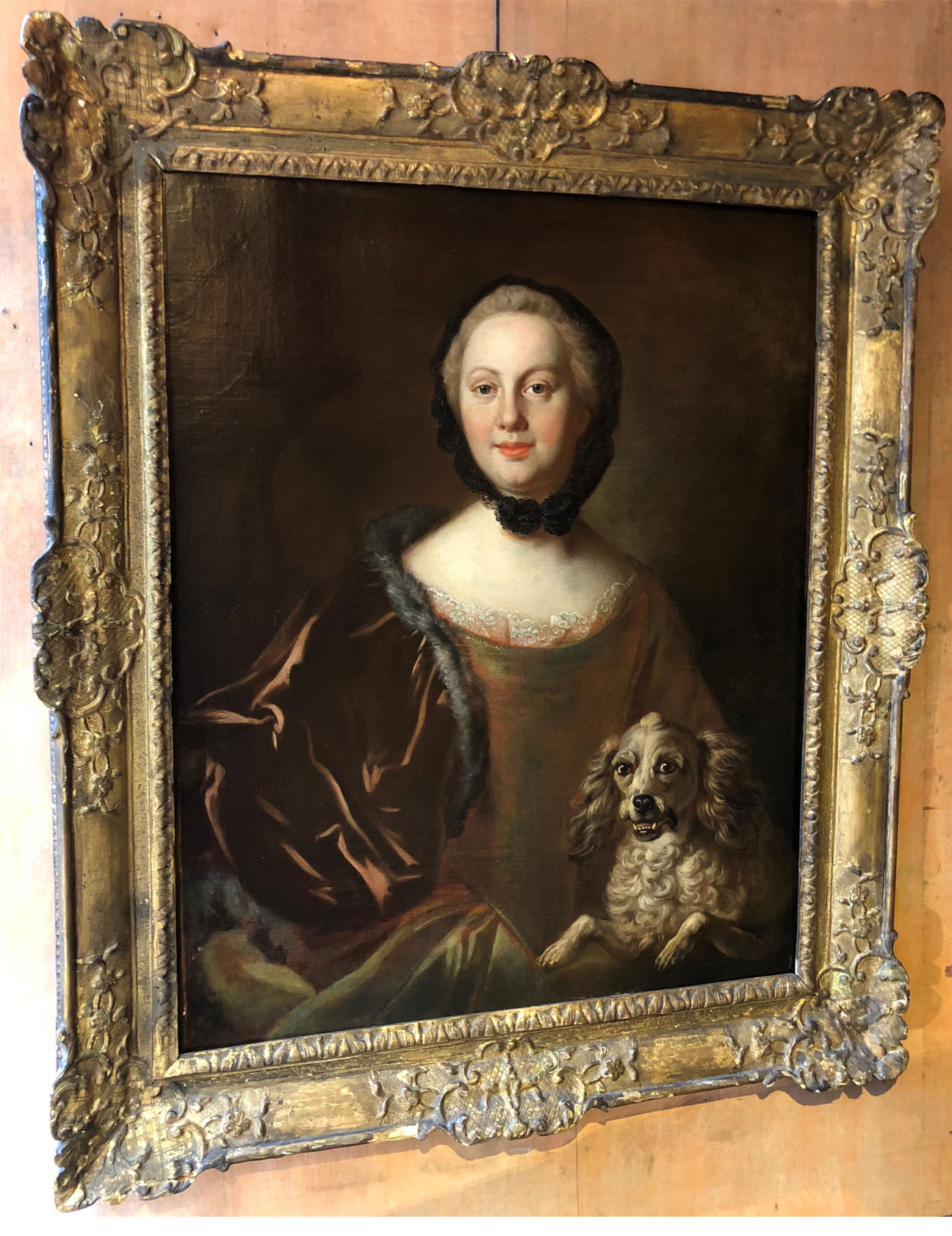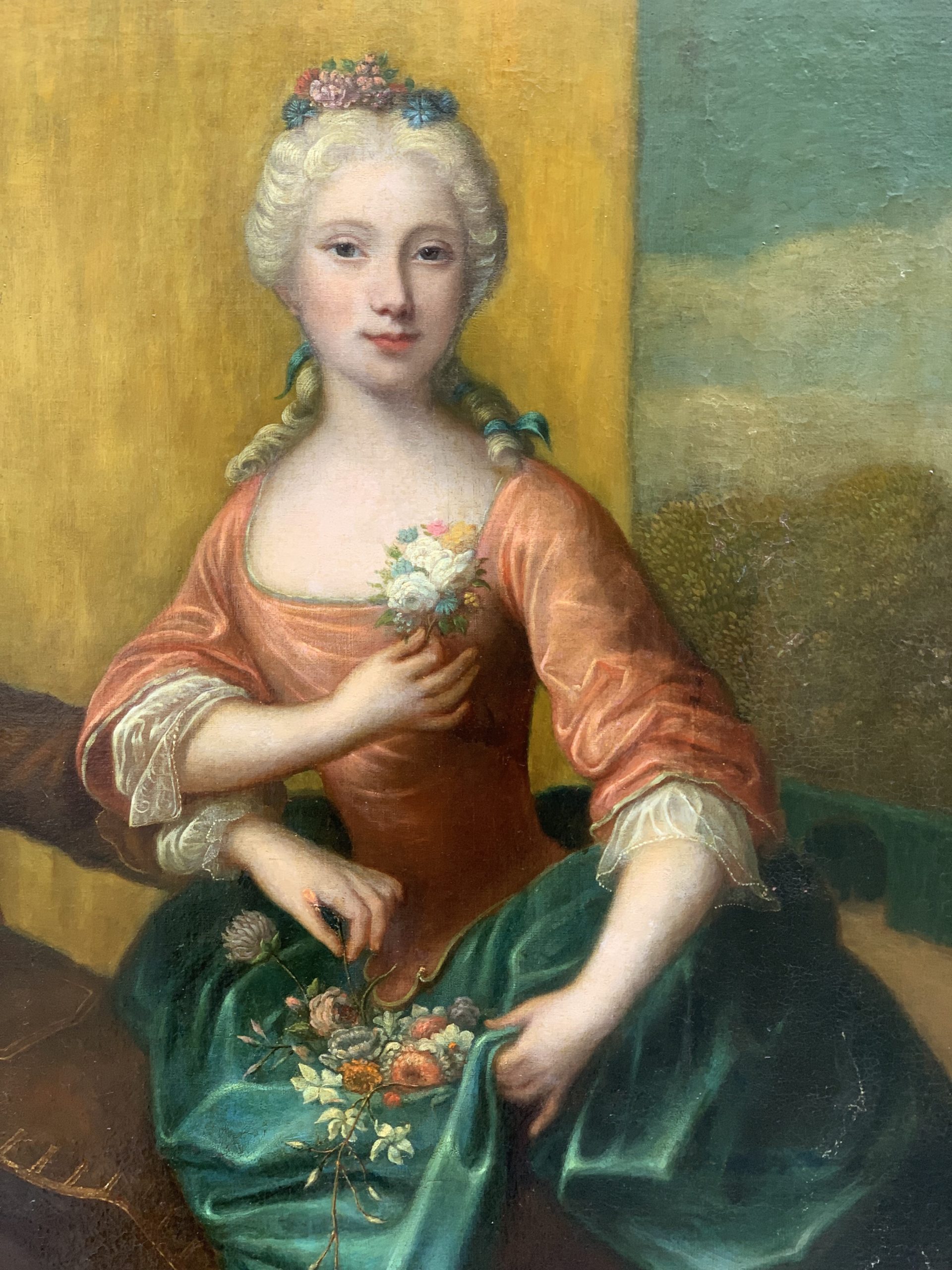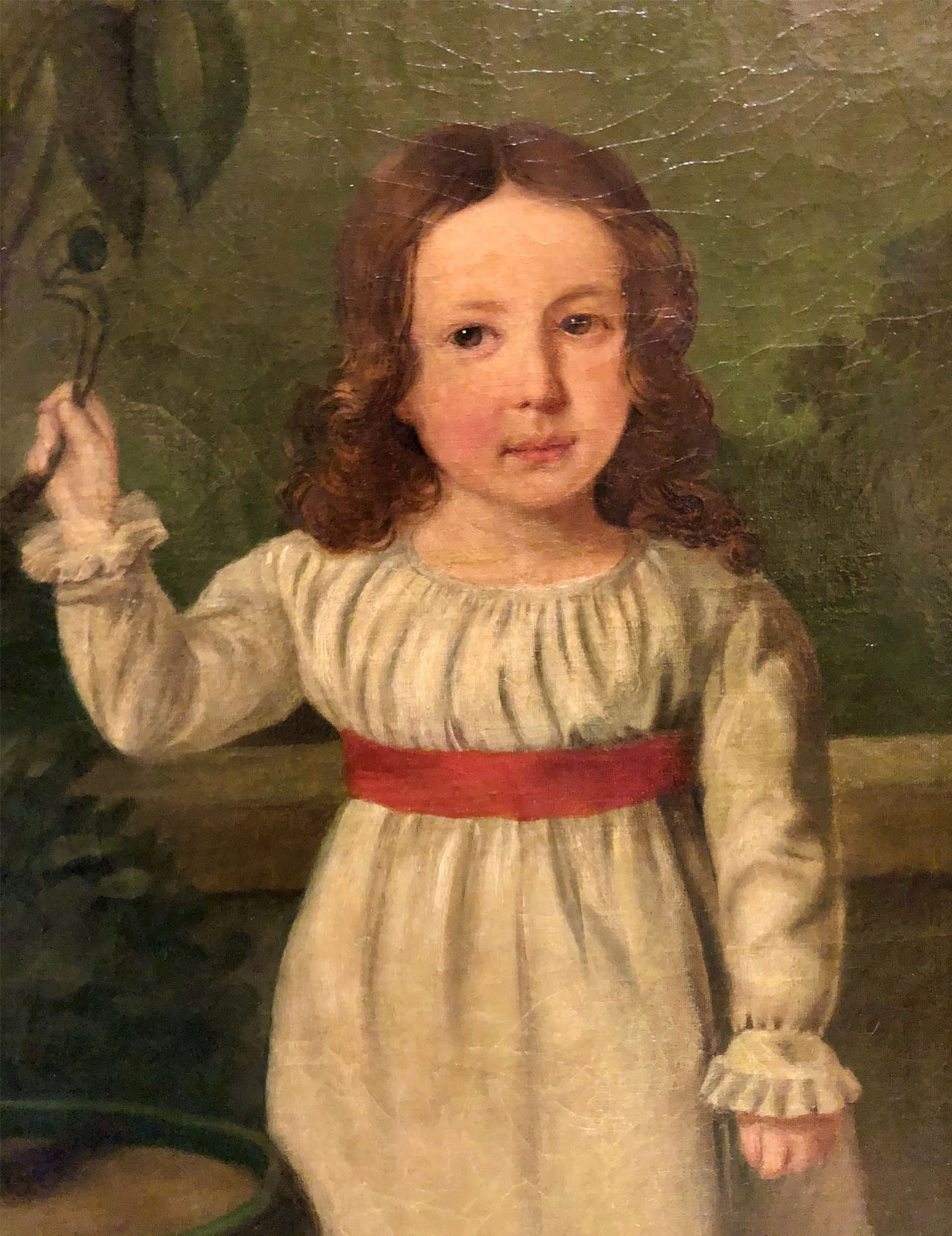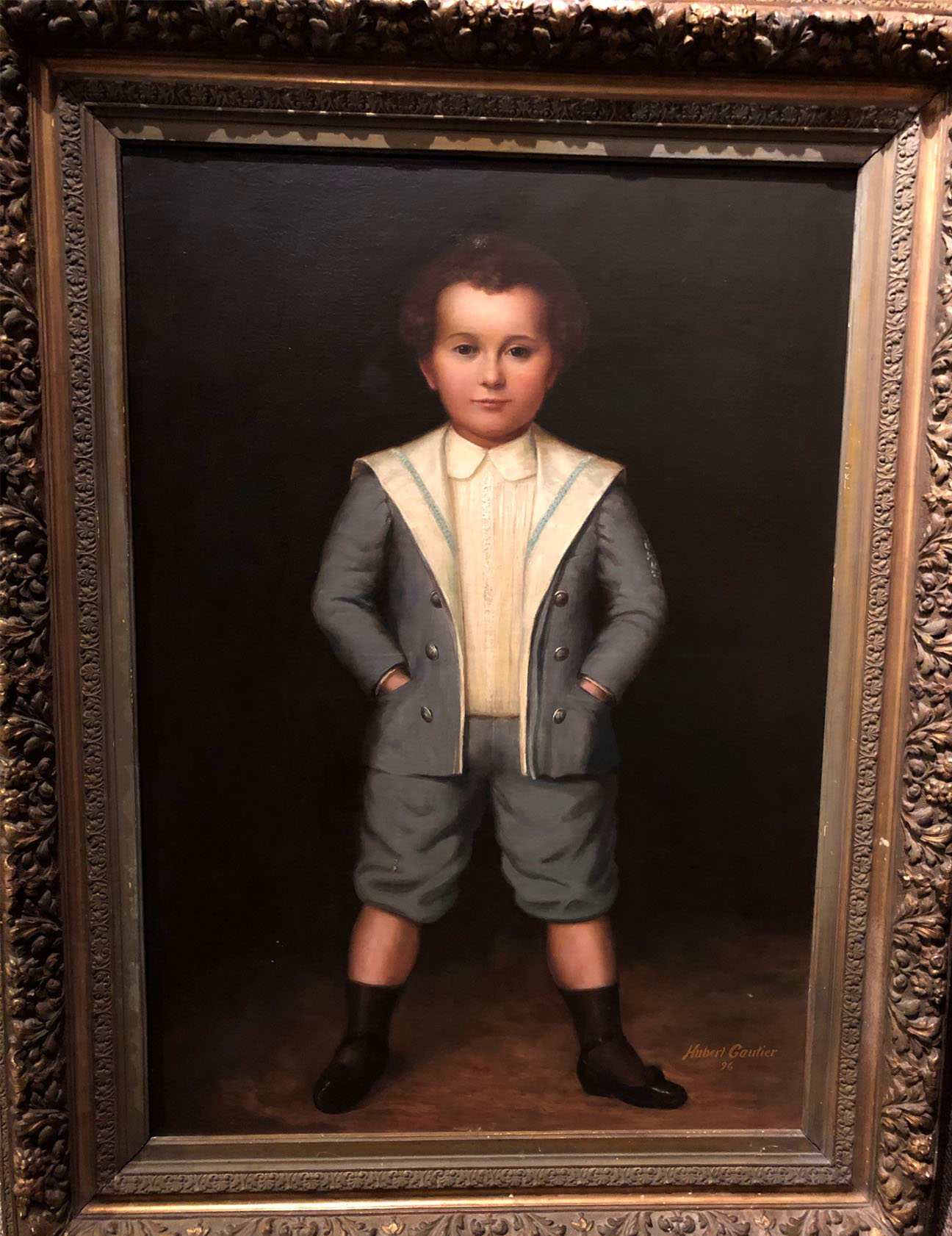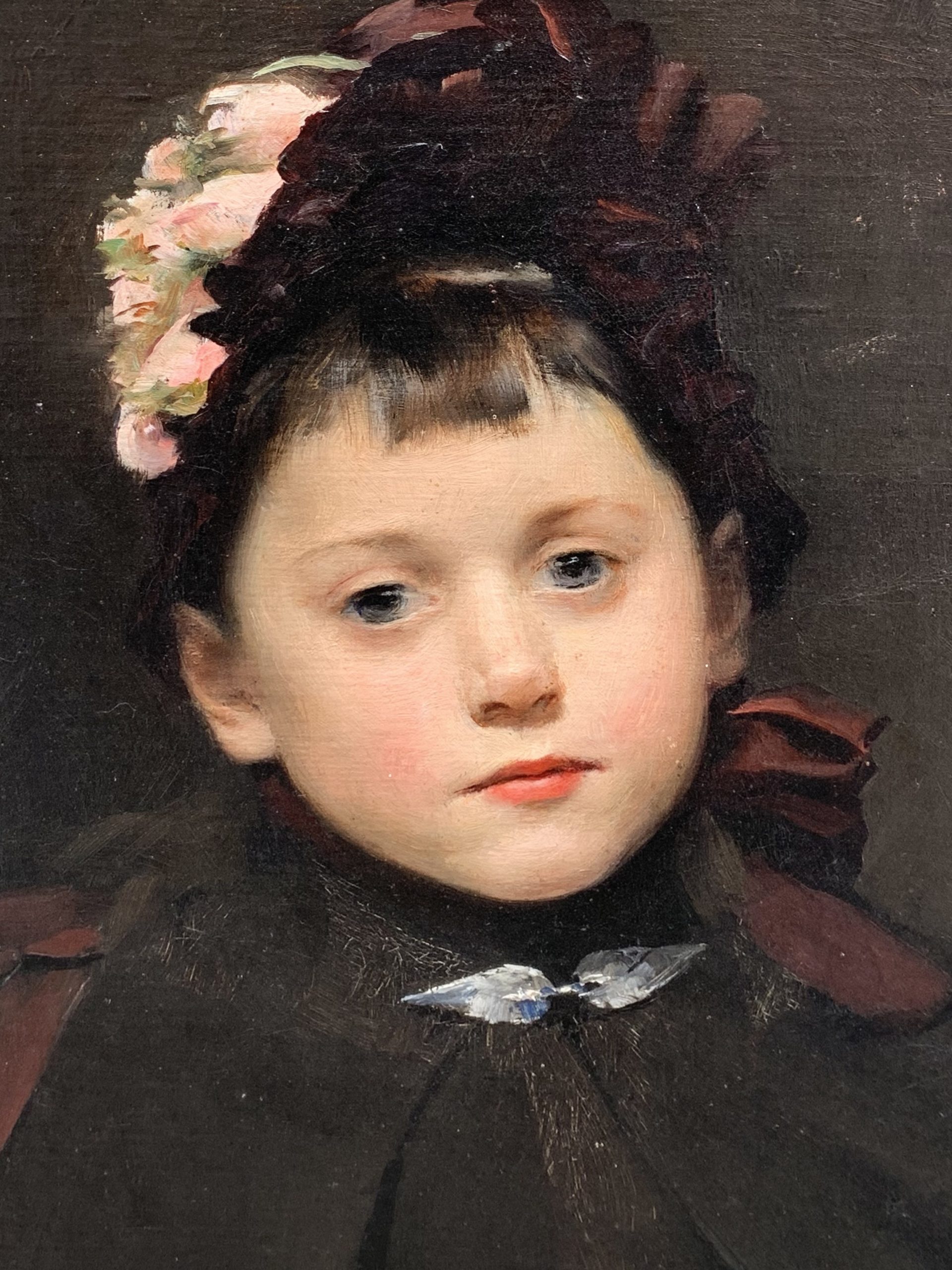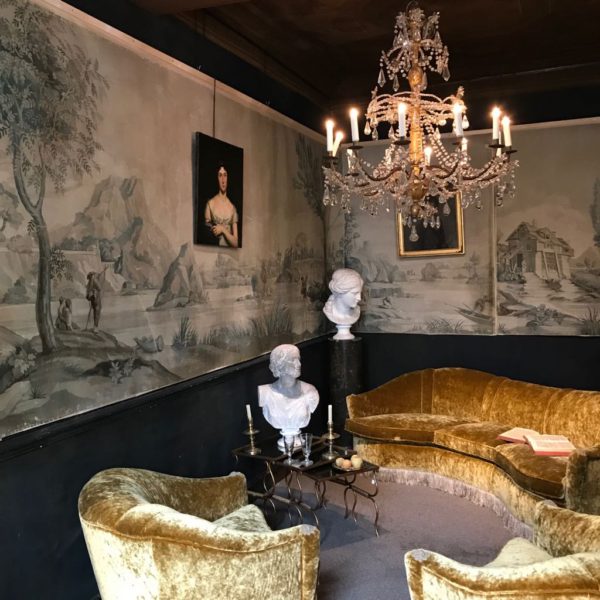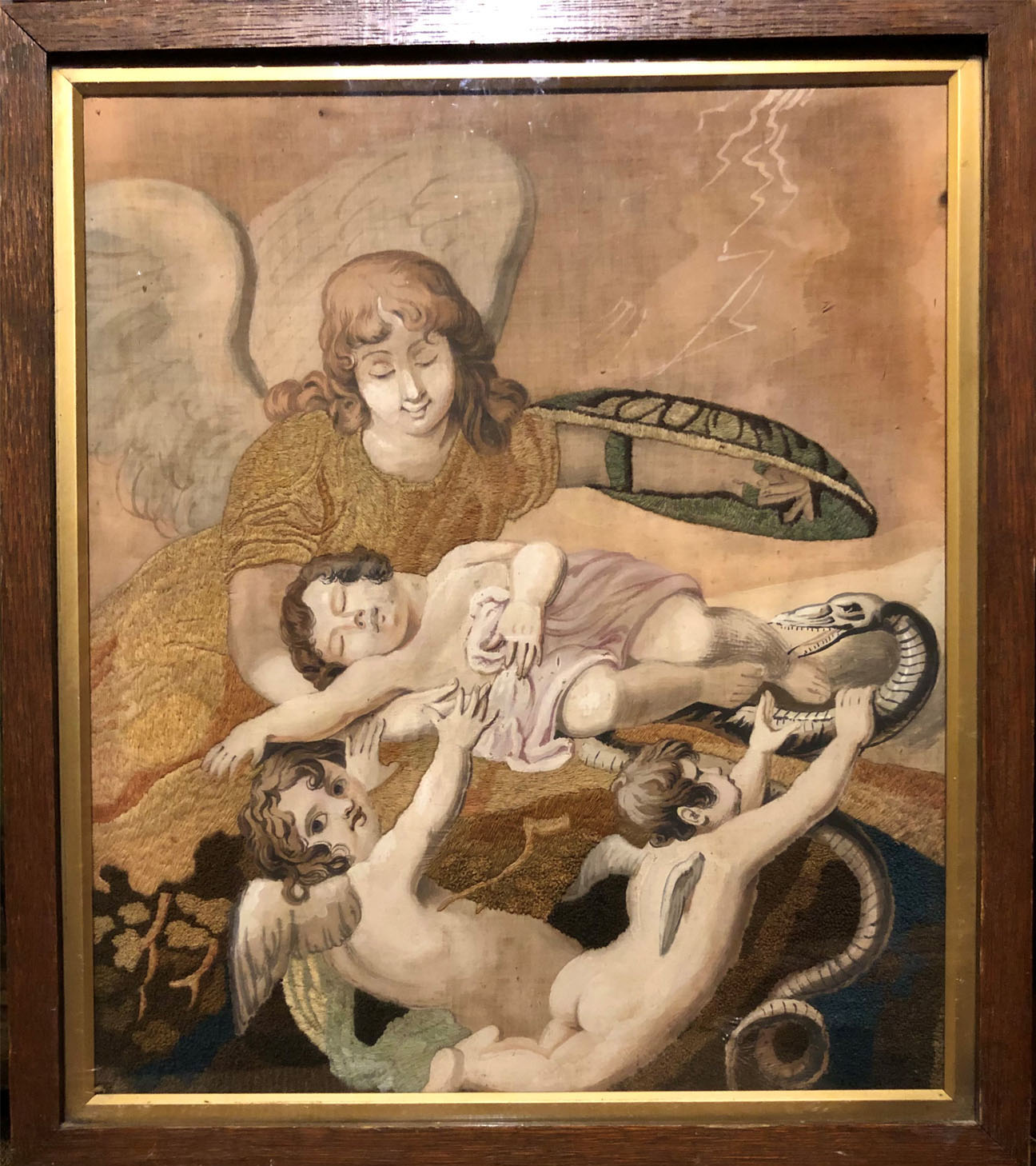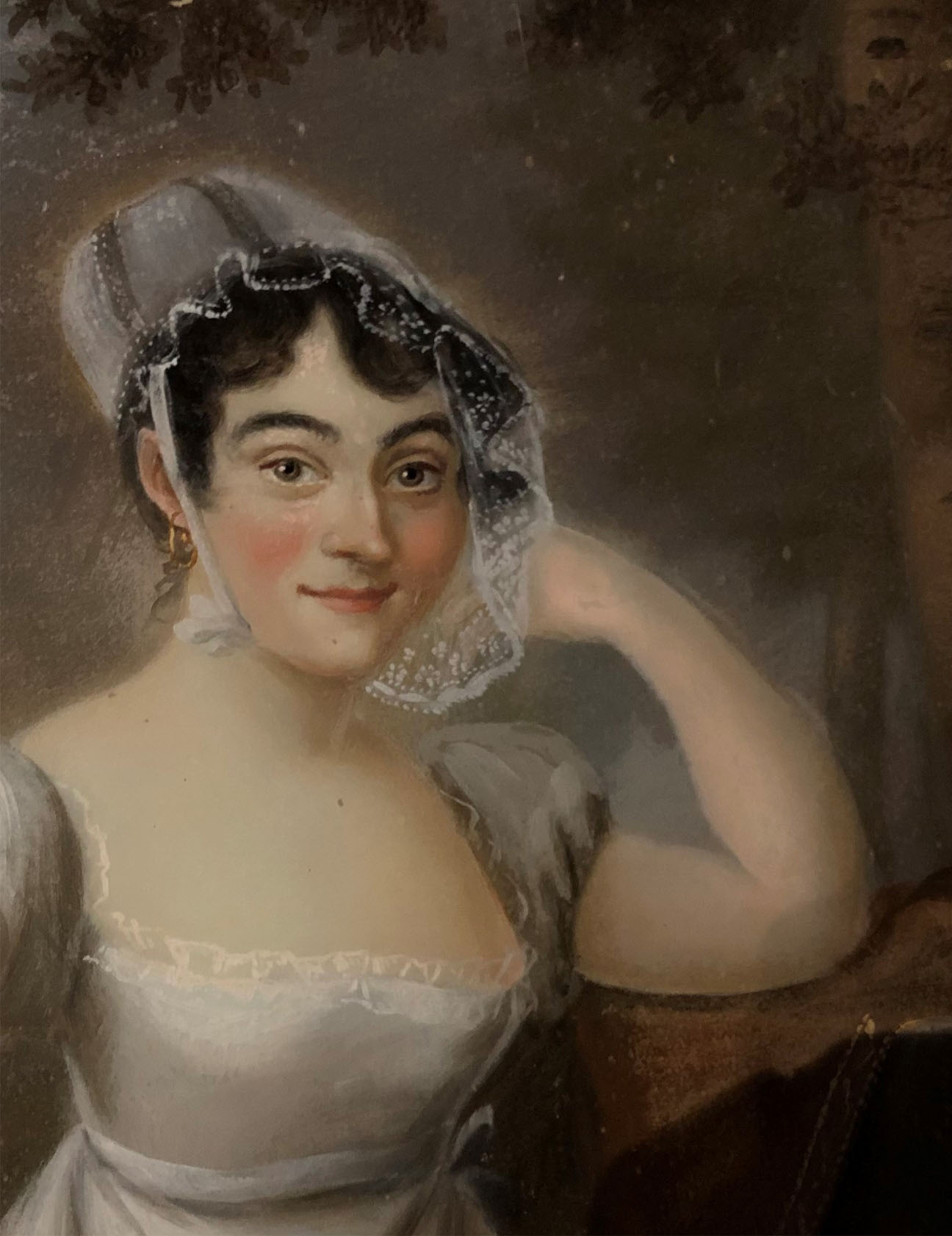“Consolation”, oil on canvas (on its original canvas) depicting children who come to console their father who thinks of his young missing wife, against a landscape background.
18th century
French school
Oil on canvas (ancient doubling)
Portrait of a Lady with her dog,
Company of Donatien Nonnotte
Sculpted wooden original frame
Circa 1740
France
Genre scene, Austrian school from the late 18th century, gilted wooden frame.
Large oil on canvas representing a little girl in a white dress, holding to a olive tree branch, with at her feet an alphabet open book.
Gilted wooden frame.
19th century
France
Oil on canvas by French painter Jean Hubert Gautier (1872-1930), a little boy dressed in blue, smiling, in 1896.
Signed “Hubert Gautier 96” on the lower right corner.
Gilded wooden frame.
Around 1896
France
Oval portrait of young Louise Guesde, daughter of Jules Guesde (1845-1922), by Spanish painter Fernando Tirado, trained in the Beaux-Arts School of Sevilla, and by painters Cano in Spain and Gérôme in Paris, France. Tirado also exhibited his work in the famous Salon parisien, between 1879 and 1884.
Portrait is signed and dated 1884.
5 panels of painted wallpapers from the first part of the 19th century.
Rural and animated landscape.
Limited prints (3)
signed by Didier Ben Loulou
Silk and embroiddered panel
Regency
England
Fixed under glass of mademoiselle Mars actress and friend of Napoléon.
Anne-Françoise Hippolyte Boutet, known as Miss. Mars (1779-1847) was one of the glories of the French Theater.
Signed Charles Brandt and dates 1810
France

